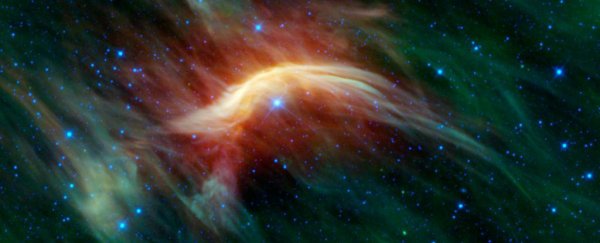Astronomers have found approximately 100 of the fastest-moving stars in the Milky Way galaxy by detecting the shockwaves these 'runaways' generate as they speed through space.
The shockwaves, called bow shocks, are generated as the runaway stars plow through the galaxy, causing material to stack up in front of them much like water piles up at the prow of a sailing ship.
Shaped like arcs, these bow shocks and the stars they reveal have been detected by researchers using data from NASA's Spitzer Space Telescope and Wide-field Infrared Survey Explorer (WISE), in addition to the Wyoming Infrared Observatory (WIRO).
"These are a previously uncatalogued collection of fascinating stars," said Chip Kobulnicky, a physicist and astronomer at the University of Wyoming. "These are hot, massive stars that are moving through interstellar space at supersonic speed."
 NASA
NASA
Hurtling through the Milky Way at speeds of more than 80,000 km/h (50,000 mph), the runaway stars achieve their stunning momentum from run-ins with other celestial bodies.
"Some stars get the boot when their companion star explodes in a supernova, and others can get kicked out of crowded star clusters," said William Chick, who presented the research at a meeting of the American Astronomical Society ahead of publication in The Astrophysical Journal. "The gravitational boost increases a star's speed relative to other stars."
The size of these bow shocks, which are detected via infrared, depend on the speed and size of the star. It's not yet clear whether the Sun creates a bow shock of its own, but massive stars such as Zeta Ophiuchi can generate dramatic shockwaves, as seen in the image at the top of this story.
Zeta Ophiuchi, located about 366 light-years away from Earth, is 20 times as massive as the Sun and also travels much faster – at 24 kilometres (15 miles) per second, relative to its surroundings – helping it shred through more cosmic matter as it goes.
Witnessing this kind of fallout is teaching astronomers more about these massive stars, and will help us to find more of them too.
"The bow shocks are new laboratories for studying massive stars and answering questions about the fate and evolution of these stars," said Kobulnicky.
